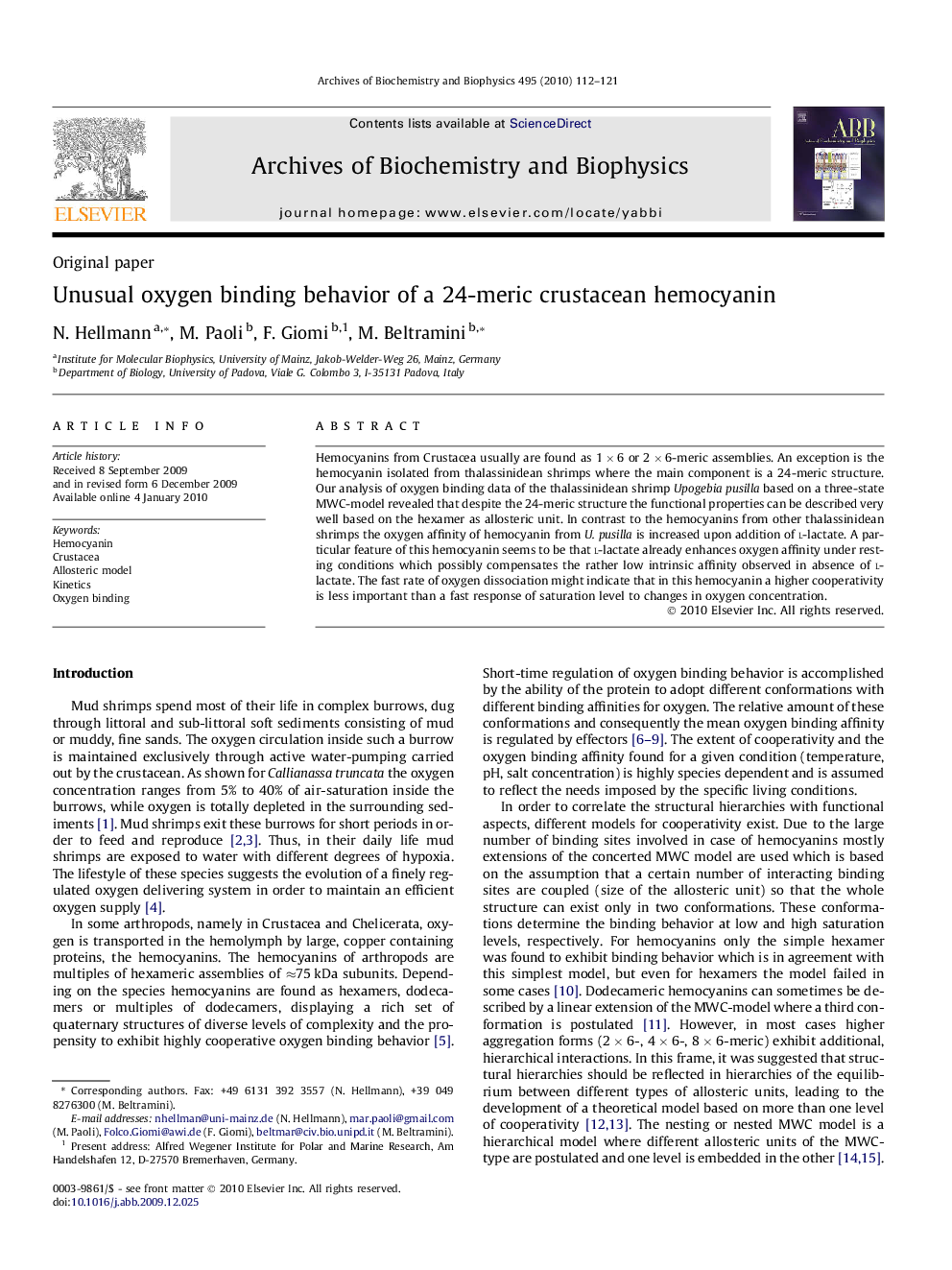| Article ID | Journal | Published Year | Pages | File Type |
|---|---|---|---|---|
| 1926127 | Archives of Biochemistry and Biophysics | 2010 | 10 Pages |
Abstract
Hemocyanins from Crustacea usually are found as 1Â ÃÂ 6 or 2Â ÃÂ 6-meric assemblies. An exception is the hemocyanin isolated from thalassinidean shrimps where the main component is a 24-meric structure. Our analysis of oxygen binding data of the thalassinidean shrimp Upogebia pusilla based on a three-state MWC-model revealed that despite the 24-meric structure the functional properties can be described very well based on the hexamer as allosteric unit. In contrast to the hemocyanins from other thalassinidean shrimps the oxygen affinity of hemocyanin from U. pusilla is increased upon addition of l-lactate. A particular feature of this hemocyanin seems to be that l-lactate already enhances oxygen affinity under resting conditions which possibly compensates the rather low intrinsic affinity observed in absence of l-lactate. The fast rate of oxygen dissociation might indicate that in this hemocyanin a higher cooperativity is less important than a fast response of saturation level to changes in oxygen concentration.
Related Topics
Life Sciences
Biochemistry, Genetics and Molecular Biology
Biochemistry
Authors
N. Hellmann, M. Paoli, F. Giomi, M. Beltramini,
